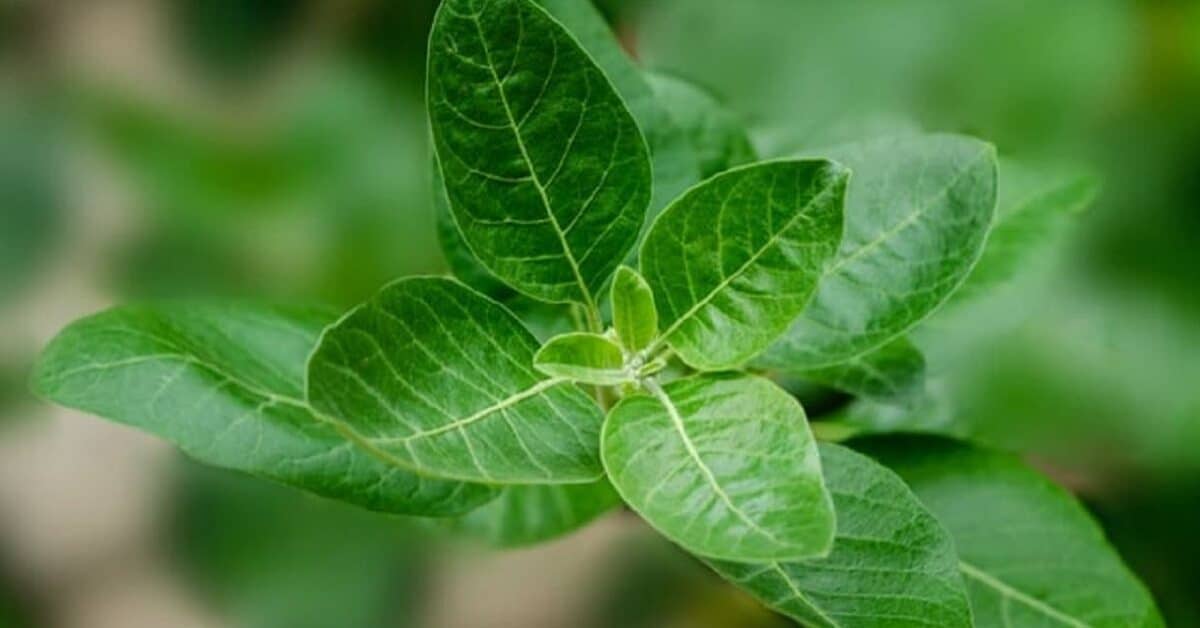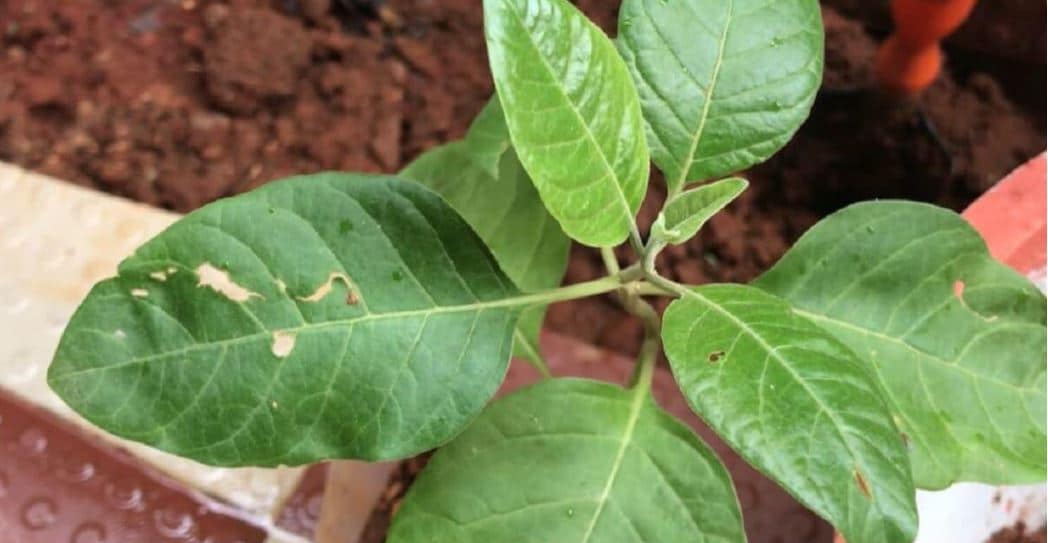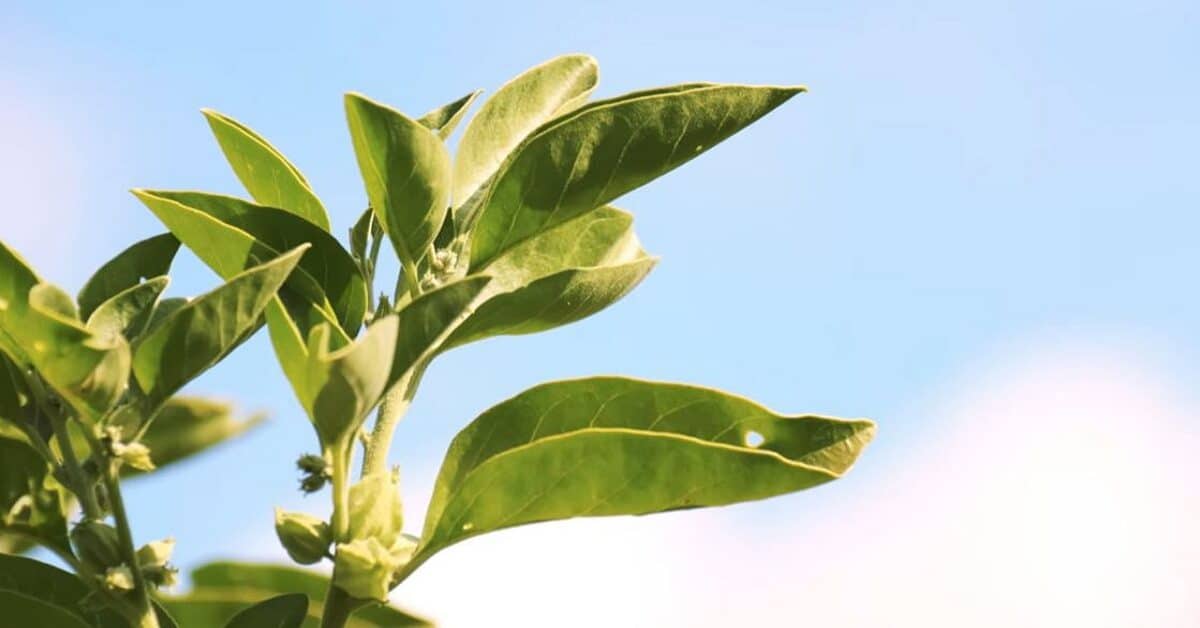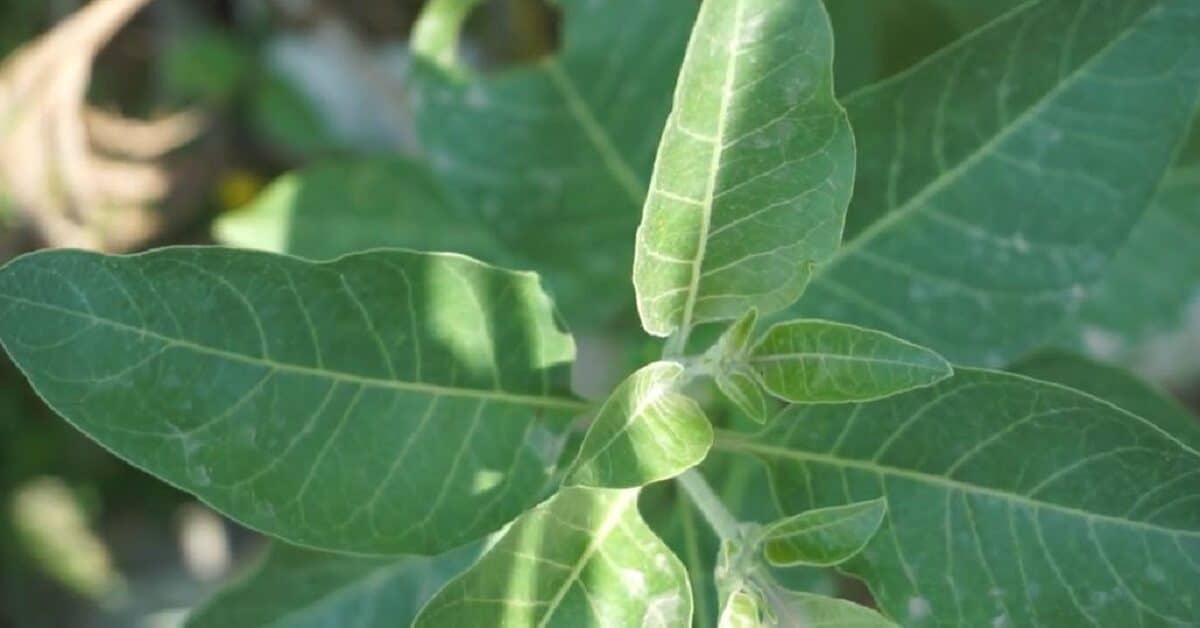
The best time to take ashwagandha depends on many factors, including your purpose for taking it and your tolerance to the side effects of the herb’s bioactive ingredients. We shall examine these factors in detail and related issues, such as dosing, how long it takes ashwagandha to work, how long it stays in the system, and hepatotoxicity (liver toxicity).
Ashwagandha (Withania somnifera) is an evergreen shrub that grows wild in dry, warm or hot climates of India, the Middle East, North Africa, and some Mediterranean countries. It belongs to the nightshades family of flowering plants.
Ashwagandha’s root and leaf extracts are used widely as an adaptogen herb. They’ve reportedly been used for medicinal purposes as part of the Ayurvedic tradition of India for more than 3,000 years. It is one of the medicinal Ayurvedic herbs known as Rasayana (health tonics).
Adaptogens are herbs that help reduce stress, boost energy, stamina, vigor, immunity, improve sexual function, and mental alertness.
The popularity of ashwagandha as an adaptogen herb has been increasing recently. It continues to soar in the wake of scientific research studies that supported popular claims about its efficacy as a health promoter.
Ashwagandha has many potential health benefits for men and women, including:
Anti-aging or rejuvenation properties
Reducing anxiety symptoms
Reducing stress by lowering cortisol levels
Reducing inflammation
Boosting immunity
Ashwagandha — also known as Indian Winter Cherry — is available for oral administration as capsules, tablets, and oil. Some producers also offer it as cream preparations, but there is currently not enough evidence from research to support the herb’s topical use. The root extract is the most widely used form of the herb, but preparations based on the leaves are also widely used.
Contents:
Do I take ashwagandha in the morning or night?
When to take ashwagandha may depend on the side effects
How much should I take per day?
How long does it take to work?
How long does it stay in the system?
Hepatotoxicity: For how long can I take it?
Can you take ashwagandha while pregnant?
Do I take ashwagandha in the morning or night?

Many ashwagandha users have been asking when is the best time to take the herb.
You may take W. somnifera at any time of the day or night. The best time to take it depends on your purpose for taking it and how well you tolerate its side effects.
If you are taking ashwagandha to improve your sleep quality, it would seem obvious that the best time to take it is in the evening, shortly before bedtime. But you may take it in the daytime, provided it does not make you feel drowsy and affect your productivity at work.
However, if you are taking it for other purposes, such as managing stress, body weight, and boosting immunity, you can take it at any time. Your decision about when to take it will likely depend on how well you tolerate the side effects.
Ashwagandha side effects

Ashwagandha affects people differently. While some individuals don’t experience any adverse events or side effects, others may have side effects, especially when they take large doses of the herb.
The most common side-effects are drowsiness, headache, digestive disturbances, nausea, vomiting, and diarrhea. The gastrointestinal effects may be due to irritation of the gut linings.
Tandon and associates reported that the safety of ashwagandha root preparations has been established in more than 30 human trials. No serious side effects or changes in blood and biochemical parameters were reported.
Most of the adverse events or side effects associated with the herb were mild and transient, according to the authors. The most common were somnolence, epigastric (middle of upper abdominal) pain, discomfort, and loose stools.
Rare side effects included dizziness, vertigo, nasal congestion (rhinitis), cough, cold, decreased appetite, nausea, constipation, dry mouth, hyperactivity, nocturnal cramps, blurring of vision, hyperacidity, skin rash, weight gain, and hallucinations.
Chandrasekhar and colleagues also reported adverse effects, such as nasal congestion (rhinitis), constipation, cough, cold, drowsiness, and decreased appetite in some of their study subjects. However, the placebo-control group also reported adverse effects, such as dryness of mouth, tiredness, fever, headache, abdominal pain, diarrhea, and tremors in the legs!
The researchers noted that the incidences of adverse events in the ashwagandha and placebo groups were comparable and not statistically significant.
Raut and colleagues reported that only one out of 18 “apparently healthy” subjects reported significant adverse events while taking the herb. The subject reported positive signs, such as increased appetite, and libido. But the subject also reported hallucinations and vertigo at a low dose.
When to take ashwagandha may depend on the side effects
If you have any unpleasant side effects from taking ashwagandha, you may need to lower your dose. You are more likely to suffer side effects after taking high doses than after taking moderate or low doses.
But if you are taking it for a purpose that requires a relatively high dose (such as boosting fertility in men) and you don’t want to suffer side effects during the day when you are at work, then you may take it in the night before going to bed. But that presumes that the side effects are only mild and won’t disturb your night’s rest.
You may also reduce the adverse digestive system effects of the herb by not taking it on an empty stomach. If you are having digestive system disturbances due to W. somnifera, you may take it after or during a meal — breakfast, lunch, or supper.
You may also take it at any other time with a light snack.
How much should I take per day?

If you want to take ashwagandha in the morning or while you are at work, you need to minimize the unpleasant side effects by ensuring you are not taking too much of it.
More is not always better when you are taking herbs with bioactive components. You need to take just the right amount for the best effect.
Most studies report testing subjects on W. somnifera extract at a dose ranging from 125 mg twice daily (500mg daily) to as high as 600mg twice daily (1.2g daily). A few studies used much higher doses.
Madhi and associates treated subjects with W. somnifera root powder at a rate of 5g/day for 3 months (12 weeks). The researchers found that it decreased stress scores, increased antioxidant levels, and improved semen quality in a significant number of the subjects.
Raut and associates conducted a study to evaluate the safety, tolerability, and activity of ashwagandha in healthy volunteers. They treated the subjects at various dose levels: 750 mg/day for 10 days, 1000 mg/day for 10 days, and 1250 mg/day for 10 days.
They reported that all three dose levels were safe, and that organ function tests were normal for all subjects. Subjects recorded decreased total- and LDL- cholesterol, an increase in strength, muscle activity, and a reduction in total body fat body percentage.
Based on academic studies, the low dosing range for a high concentration full-spectrum root extract would be around 125mg twice daily (250mg daily), while the high dosing range would be about 600mg twice daily (1200mg) or higher.
Midrange dosing would be around 300mg twice daily (total of 600mg daily) (Verma et al.)
If you are taking ashwagandha and wondering about the right dose, we advise you to talk to your healthcare provider. Your healthcare provider may advise you to start with low or moderate dosing and increase gradually — if necessary– to gauge your reaction and tolerance to the active ingredients.
It is not advisable to significantly exceed the 600mg twice daily dose, especially if you want a pleasant, side-effect-free experience of the herb. If you feel the need to exceed 1.2g a day, talk to your healthcare provider.
How long does it take to work?

Many studies investigating the safety of ashwagandha reported the effects in a time frame ranging from 4-10 weeks.
Langade and associates treated subjects with 300 mg of high concentration full-spectrum ashwagandha root extract twice daily and reported a significant positive effect on sleep quality after 10 weeks.
Salve and colleagues reported beneficial effects of the herbs on stress parameters after subjects were treated with the 125mg, 300 mg, and 600 mg twice daily for 8 weeks.
Shenoy and co-workers also reported significant improvement in the cardiorespiratory endurance of the elite athletes after taking 500mg capsules twice daily for 8 weeks. However, Singh and associates reported beneficial neuroprotective effects of the root extract after a week of taking it.
Based on the results from various studies, it appears safe to say that you may expect to experience the full beneficial effects of ashwagandha after about 8 weeks.
How long does it stay in the system?
Analysis has revealed several chemical components in ashwagandha roots. The bioactive components include alkaloids (isopellertierine, anferine), steroidal lactones (withanolides, withaferins), and saponins (sitoindoside VII and VIII)
The main bioactive components of ashwagandha are withanolides, including withanolide A, withaferin A (WFA), and withanolide D. Researchers believe that W. somnifera’s medicinal properties are primarily due to the withanolide components.
Khedgikar and associates reported that an oral dose of 10 mg/kg of withaferin A (WFA) in mice resulted in maximum plasma levels after 3hrs, with a half-life of 7.1±1.2 hrs.
A study found that peak plasma concentration occurred in mice between 10-20 minutes after oral administration of an aqueous extract of the plant containing 0.485 mg/kg of withaferin A and 0.4785 mg/kg of withanolide A (Rathi et al.)
Withaferin A was also found to have a half-life of 1.36 h after a single 4 mg/kg dose in 7-8-week-old female mice and a very rapid plasma clearance (Thaiparambil et al.)
Oral administration of W. somnifera to buffalo calves resulted in a mean peak plasma concentration at 0.75 h, with a mean half-life of 0.92 ± 0.032 h, according to Dahikar and associates.
The animal studies indicated that ashwagandha’s main bioactive withanolide components are rapidly absorbed and cleared from the system. The variable results in mice may be due to different factors such as the age of the animals, dose, method of administration, and whether it was the crude root extract that was administered or a preparation containing only one isolated bioactive compound.
The roots of ashwagandha are also rich in iron (Bharti et al.)
Ashwagandha hepatotoxicty: For how long can I take it?

Studies have only evaluated the safety of taking ashwagandha for up to 3 months. The effects of taking the herb for longer periods are uncertain (Verma et al.)
You should avoid taking high doses for extended periods until studies have fully established its safety for long-term use.
Although researchers have not widely reported adverse effects, there have been a few reported cases of mild-to-moderate but reversible liver injury (hepatotoxicity) in people after taking ashwagandha for only 2-12 weeks.
The cases reported in Japan, Iceland, and the U.S. happened after the patients took herbal products labeled as containing the herb. The signs inctuded jaundice and pruritus (itching).
It was not immediately clear that the adverse events were due to ashwagandha or contaminants in the commercial herbal preparations. But suspicions that the hepatotoxic effects might have been due to the herb appeared confirmed after some of the products were tested and found to be without contaminants.
In a 2020 study, Björnsson et al. also reported that ashwagandha may have hepatotoxic effects. According to the authors, the herb may cause cholestatic (reduced bile flow) liver injury with severe jaundice and pruritus, but it is usually self-limited with liver tests normalizing in 1-5 months.
However, hepatotoxicity is a rare adverse event. The herb does not affect the liver of the vast majority of users.
Studies have been done to evaluate the interactions of crude extracts and principal phytoconstituents of W. somnifera with the drug-metabolizing enzymes CYP3A4 and CYP2D6 in human liver microsomes (HLM).
Ashwagandha showed no significant interaction with CYP3A4 and CYP2D6 enzymes in HLM (Savai et al.).
Tandon et al. also reported that the root extracts did not show in vitro or in vivo inhibition of CYP3A4 and CYP2D6.
A proprietary formulation of Withania somnifera, Boswellia serrata, Zingiber officinale, and Curcuma longa (BV-9238, 0.5 µg/mL)) did not show any significant inhibition of six major human cytochrome P450 enzymes (Dey et al.).
These results suggested that ashwagandha is a safe and well-tolerated formulation and does not inhibit drug-metabolizing activity in the liver.
Can you take ashwagandha while pregnant?

The safety of ashwagandha during pregnancy and while breastfeeding has not been established. Consult your doctor if you want to take ashwagandha during pregnancy.
Ashwagandha may cause drowsiness and mild CNS depression (Tandon et al.). You need to consult your doctor if you are taking anticonvulsants, barbiturates, and benzodiazepines. It is also advisable to avoid taking W. somnifera at least two weeks before and after surgery that requires anesthesia.
Ashwagandha boosts the immune system, so you need to talk to your doctor before using ashwagandha if you have autoimmune diseases, such as rheumatoid arthritis (RA), systemic lupus erythematosus (SLE), and multiple sclerosis (MS).
Some studies reported an increase in thyroxine (T4) levels after taking ashwagandha root extract (Tandon et al.). Thus, people with thyroid conditions characterized by elevated thyroxine levels, such as hyperthyroidism, should avoid taking the herb.
Ashwagandha lowers blood sugar and blood pressure levels. You should, therefore, take care when using it with blood sugar and blood pressure-lowering medication due to possible unwanted potentiating effects.
Similarly, W. somnifera boosts immune function, so taking it may counteract the effect of medication intended to lower immune activity (immunosuppressants) after surgery.

